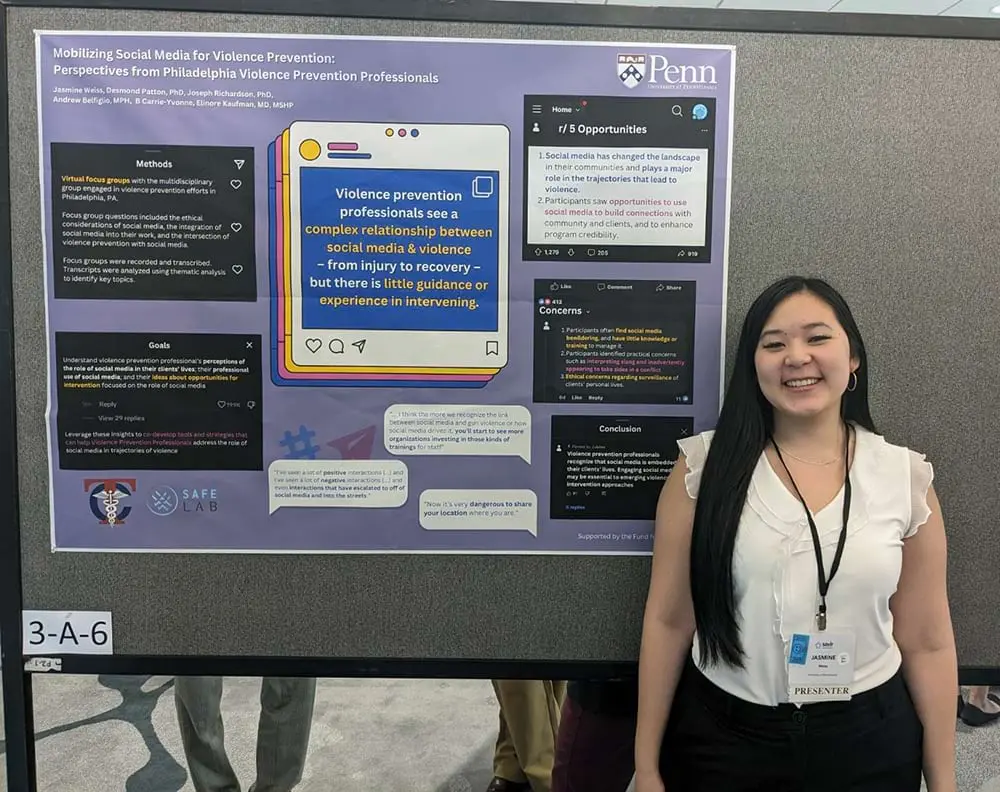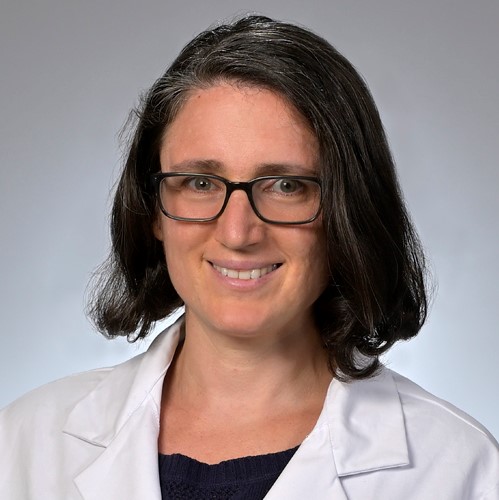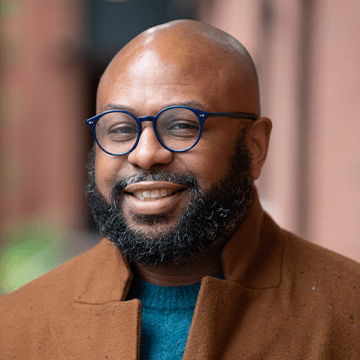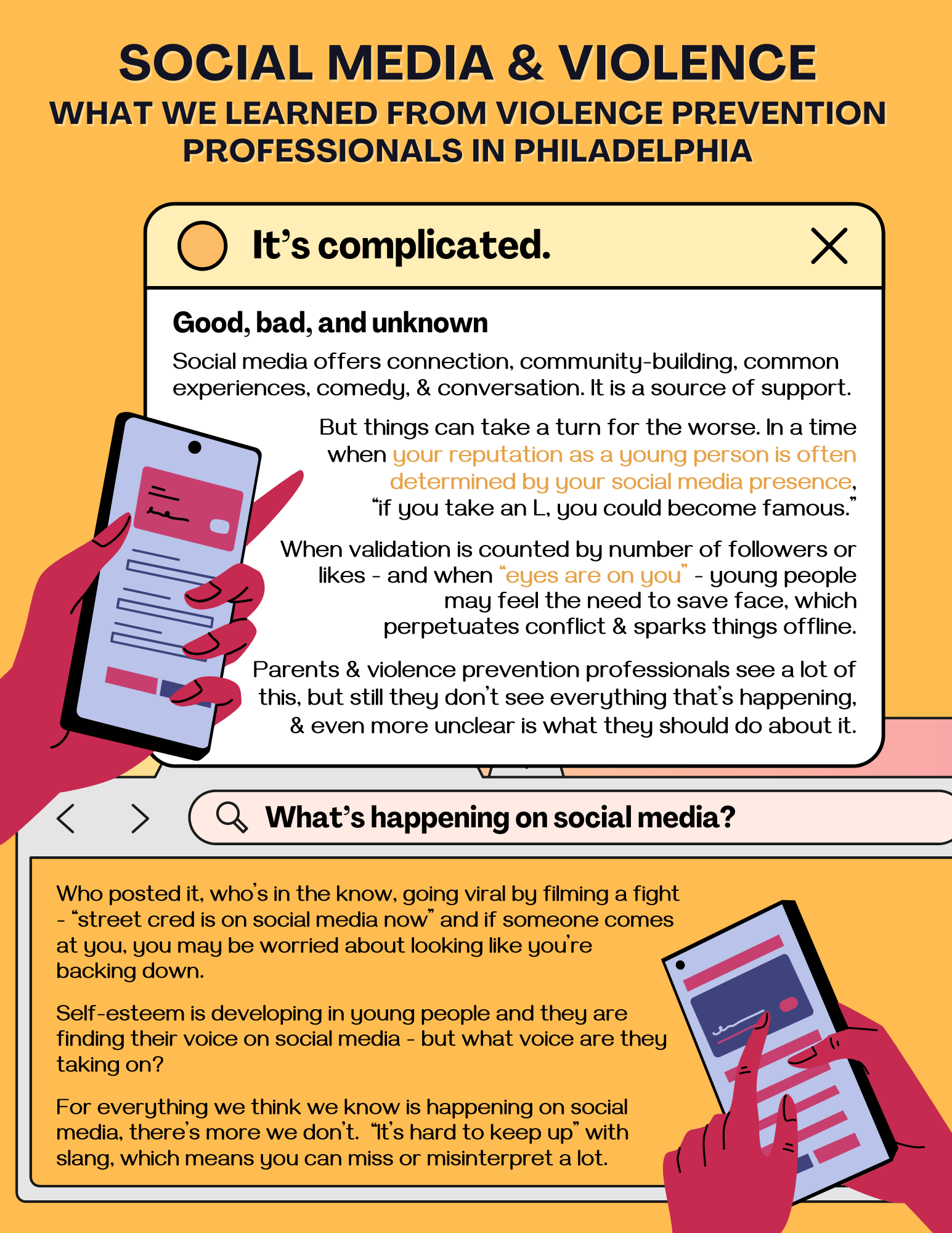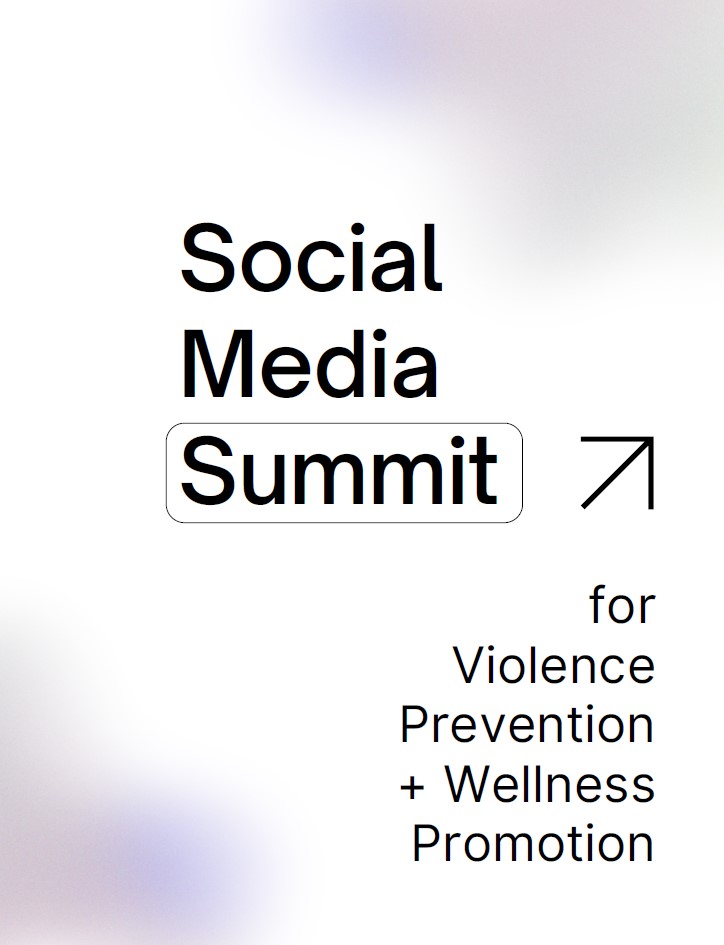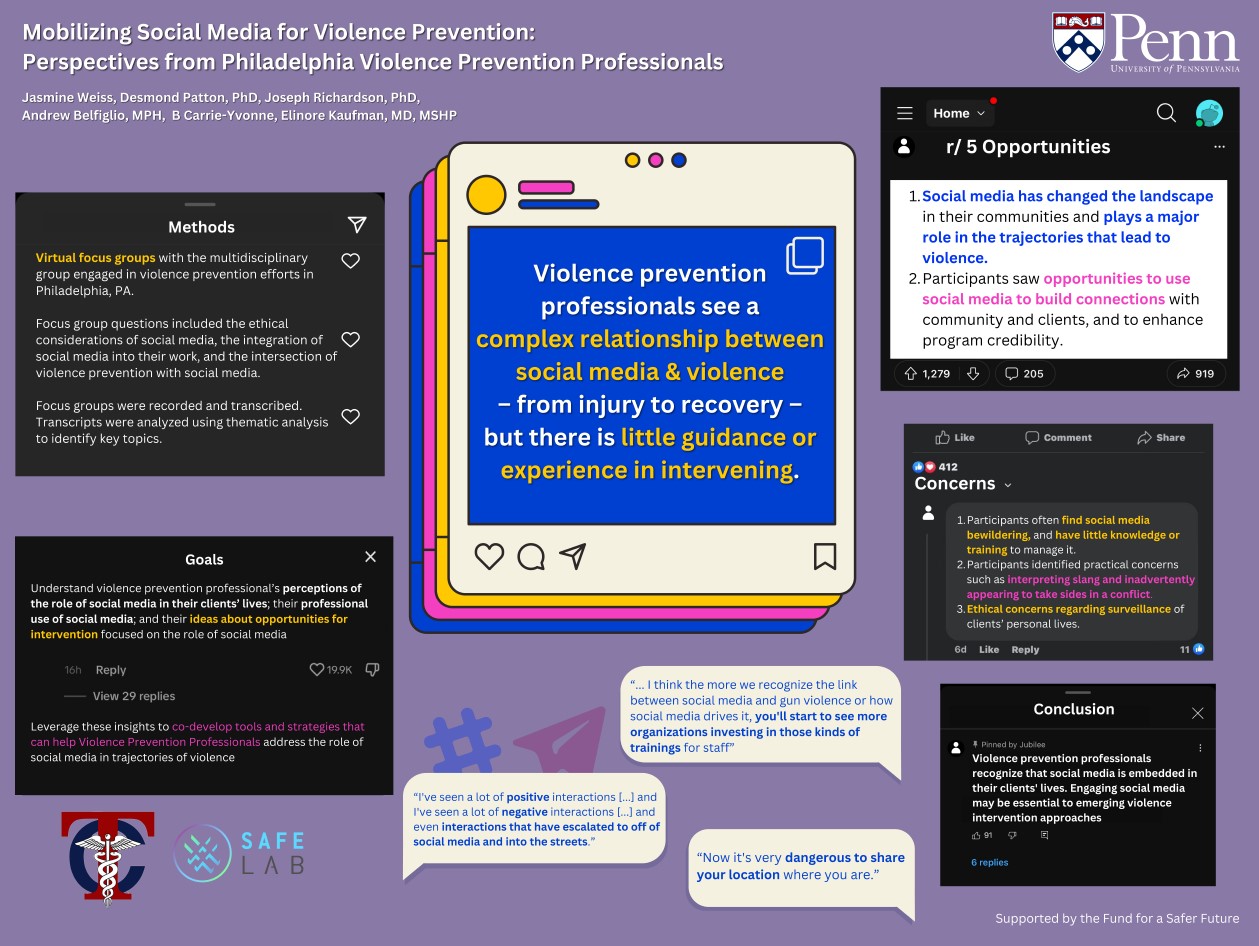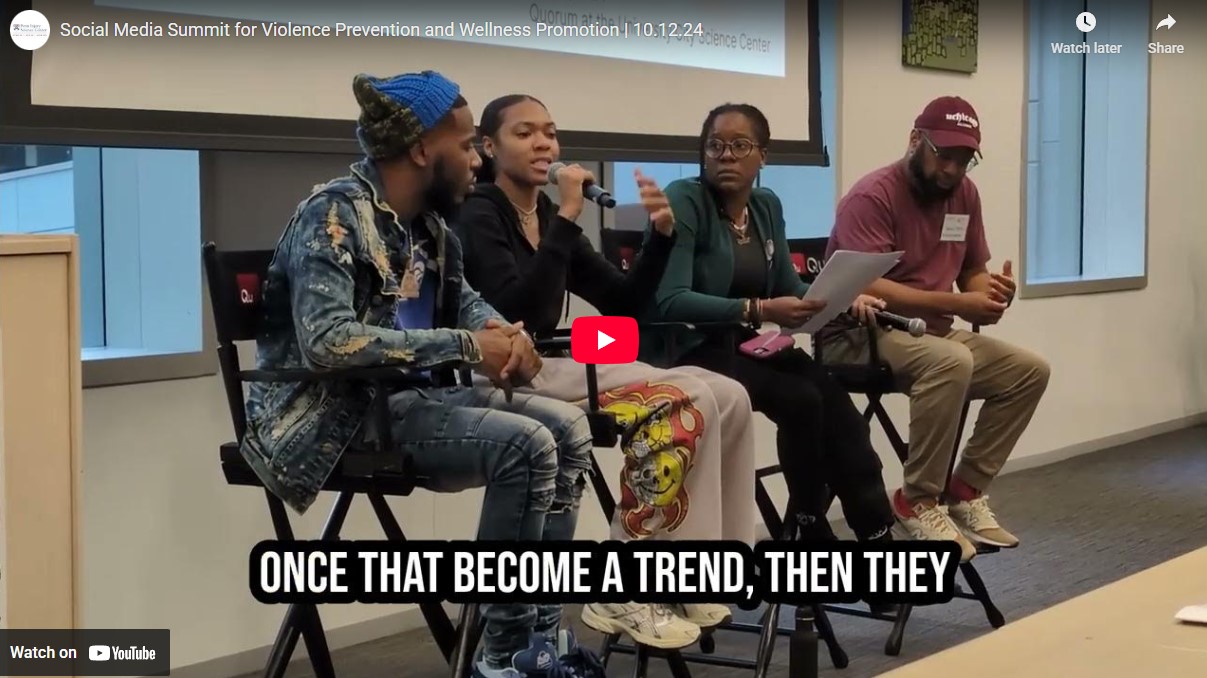This research looks at how social media affects violence and healing in Philadelphia. Social media can make conflicts worse, but it can also help people connect, grieve, and recover.
The goal is to find ways that violence prevention workers—especially those in hospitals and community groups—can use social media to help stop violence and support people who’ve been hurt.
This work started with the support of a grant from the Fund for a Safer Future, to conduct focus groups with violence prevention professionals and interviews with patients who are recovering from a violent injury.
The project has since been funded by the Injury Control Research Center (ICRC) grant awarded to the Penn Injury Science Center by the Centers for Disease Control and Prevention. In this award, researchers will collaborate with patients, community leaders and organizers, social media content creators, violence prevention professionals and more, to analyze social media data to (1) identify opportunities for prevention and intervention and (2) develop a training component to equip practitioners with tools and skills for violence prevention and wellness promotion via social media.
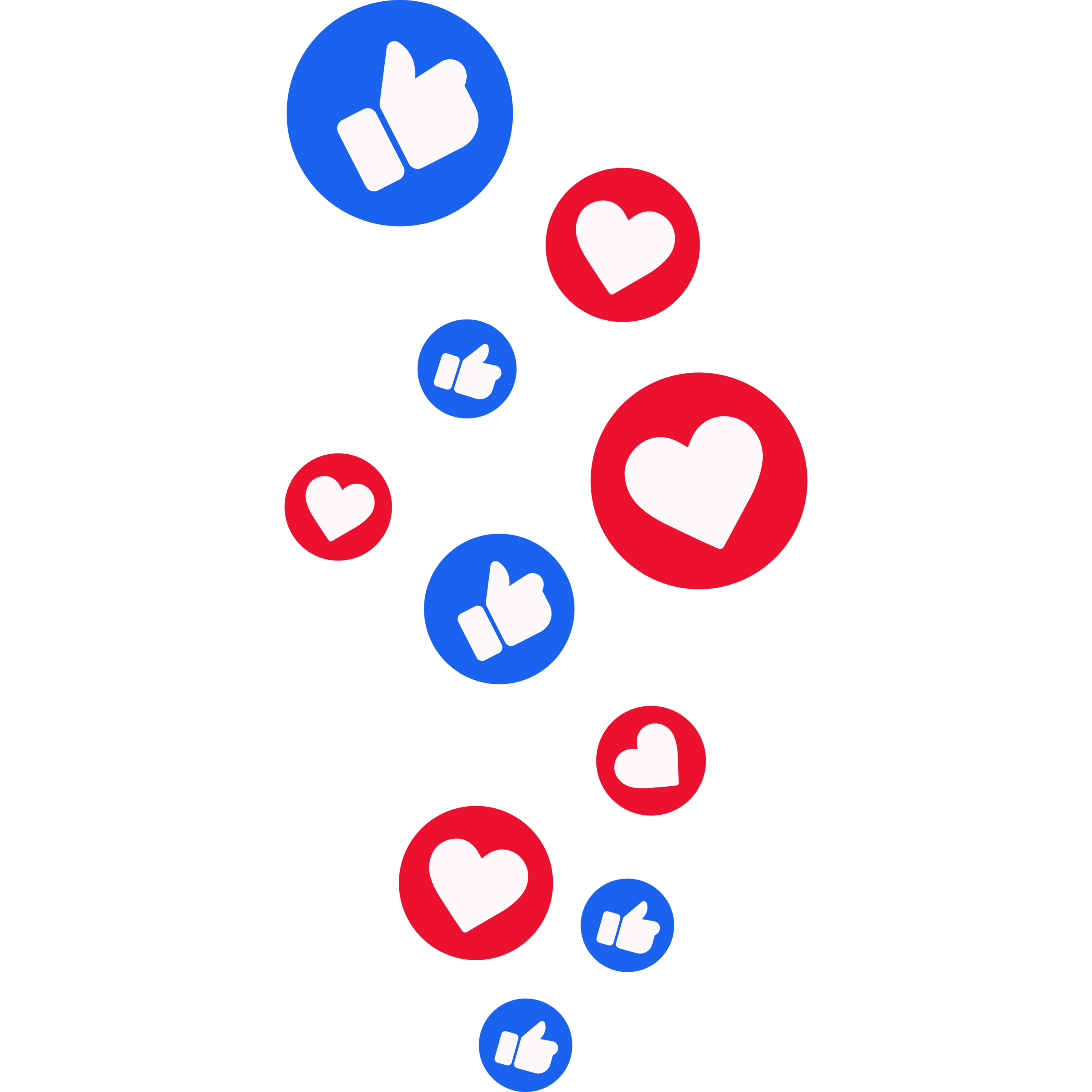
Why it matters
Gun violence had risen all of the country, including in major cities like Philadelphia. Even with violence now decreasing, following targeted investment in upstream and downstream solutions, too many people are affected by violence and many that survive face long-term physical pain, emotional trauma, and challenges in daily life. This includes depression, PTSD, and other ongoing medical needs, not to mention the financial and social impacts.
Social media may play a role…
Social media is part of everyday life for most people—especially young adults. It’s where people connect, share feelings, and express themselves. But it can also be a space where conflict starts or gets worse. A single post or comment can spread quickly and lead to real-world violence.
At the same time, social media can be a place for healing. People use it to grieve, find support, and stay connected during recovery. This dual role—both harmful and helpful—makes it crucial to understand how social media affects people after violence.
Current support systems don’t fully address this
Hospitals and community violence prevention programs do amazing work, but they often don’t have tools or training to deal with what’s happening online. This project helps fill that gap by:
Listening to survivors and experts
Creating tools that help violence prevention workers use social media safely and effectively
Making sure everything is done ethically and with community input
It’s about real change…
By understanding how social media connects to violence and recovery, we can:
Help prevent future violence
Support survivors in their healing
Build stronger, safer communities
Above: In collaboration with the ABRO Experience, the Penn Trauma Violence Recovery Program and SAFELab hosted the Social Media Summit for Violence Prevention and Wellness Promotion to bring together local content creators, community members, researchers, and violence prevention professionals in Philadelphia for conversations around making social media and the city a safer place where young people can thrive.
Below/right: Jasmine Weiss (Penn MSW 2024) presenting at SAVIR, April 15, 2024 – Mobilizing Social Media for Violence Prevention (PI: Elinore Kaufman)
